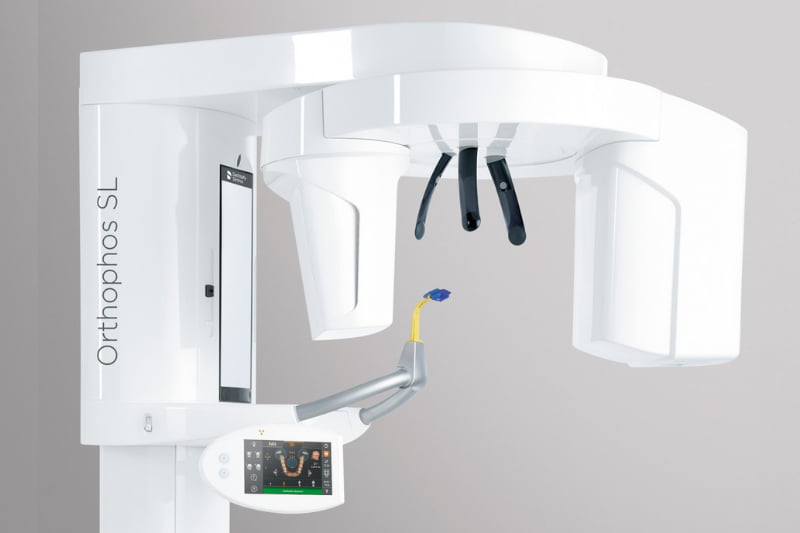What is Cone Beam Dental Imaging?
Cone Beam imagining uses a special type of technology differing from standard dental x-rays that provides a 3 dimensional image.
Cone Beam CT has some similarities with conventional X-rays, and also with the standard CT scans you would get in a hospital setting. But it’s a huge advancement in technology and diagnostic precision. For the dentist, it offers the ability to visualize intricate structures inside the mouth, such as root canals, nerves and sinuses (air-filled spaces) in the jaw — in three dimensions — without surgery. Traditional dental x-rays show only hard tissue in 2D: bone and tooth, essentially. There is very important vasculature and soft tissue that can be detected through cone beam imaging that just isn’t visible with traditional x-rays. For the patient, it can reduce the need for invasive procedures, shorten treatment time and offer the chance for a better outcome.

What is Getting Cone Beam Imaging Like?
Cone Beam Imaging in our office is simple, straightforward, and fast. The chin rest and bite stick line up the patient perfectly for the imaging. While the patient stands with their head aligned properly (chin in chin rest, forehead resting on guide, and gently biting on stick to ensure teeth are spaced properly), the small arms of the machine move in a circle around the patient, capturing images.
The machine takes many “pictures” from many different angles, which are all put together to make the 3D image of the patient’s anatomy. It is completely digital and instantly available for the dentist to read.

Why Do I Need This Imaging?
The ability to see fine anatomical structures in 3-D has proven invaluable in treating conditions in many areas of dentistry, therefore, there are several ways that dental Cone Beam Imaging is useful in the dental office:
Dental Implants:
Dental Implants involve replacing a tooth with an implant that acts like a tooth: root and all. A post is implanted into the jaw (with a crown eventually on top that looks like a real tooth), allowing the patient normal use of the implant as if it were a tooth. Cone Beam Imaging is the gold standard for x-rays and imaging when it comes to dental implants.
With the imaging we have in our practice, our dentists can plan and then place implants in the safest, most effective way possible. They can ensure that the angle the implant is placed allows for the healthiest bone levels and growth
Endotontics (Root Canal Therapy ):
- Dentists performing intricate procedures (like complex root canals, for example) can benefit from a clearer visualization of the tooth’s anatomy. Our Root Canal Specialist (Endodontist) can examine the anatomy of the tooth he is treating in 3-D to be able to diagnose and treat curves, blockages or unique anatomical features in the tooth. It is also used to clearly visualize any pathology in the tissues around the tooth
Orthodontics:
- Having accurate information on the position of teeth and jaws helps determine exactly how and where teeth should be moved
Oral Surgery:
Treatment for tumors or impacted teeth is aided by the level of fine detail shown in these scans. For Example, when evaluating the removal of wisdom teeth, the mapping of the nerves close to the impacted wisdom teeth is essential and crucial before surgery to ensure those nerves are not affected during the procedure .
The detailed diagnostic images that CBCT provides have made it an essential tool in many dental specialties. But, as with any diagnostic tool that uses radiation, the medical benefits offered must be weighed against the (small) potential risks of the procedure
Could Cone Beam CT Benefit You?
Each patient’s situation is different, and must be carefully considered by a clinical professional before any test or procedure is performed. While CBCT delivers a smaller dose of radiation (X-rays) than many other diagnostic tests, it still carries a small risk — particularly for younger patients, or those with other health problems. As is the case for any medical procedure, all risks, benefits and alternatives are taken into account before the procedure is recommended.

